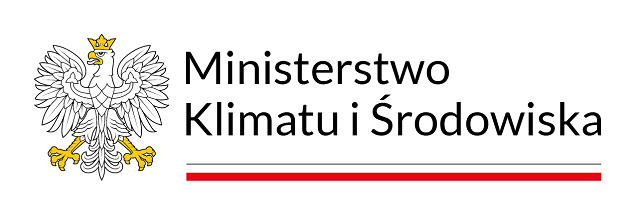International Importance
ô
International Programme ãMan and Biosphere"
ô
In 1971, UNESCO launched the International Programme ãMan and Biosphereã (MAB), the aim of which is to establish a sustainable relationship between people and the biosphere. One method of accomplishing this aim is the creation of World Network of Biosphere Reserves.ô (read more)
In 2002, Polesie National Park became a part of the World Network of Biosphere Reserves as part of the Biosphere Reserve ãWest Polesieã, and together with Shatskyi Biosphere Reserve (Ukraine) as well as ãPribuzskoye Polesieã Biosphere Reserve (Belarus) formed ãWest Polesieã Transboundary Biosphere Reserve.
During the meeting in Paris on 8-13 July 2018, the International Co-ordinating Council of the UNESCO MAB Programme incorporated 20 new areas on the Biosphere Reserve list, including two transboundary areas. One of them is ãWest Polesieã Transboundary Biosphere Reserve consisting of areas in Poland, Belarus and Ukraine, which so far have functioned as distinct (domestic) Biosphere Reserves.
ô
ô
ô
ô
ô
ô
Within the framework of the signed Treaty of Accession, Poland, while entering the European Union, committed itself to contribute to the protection of European natural heritage. Thus, functioning of the European ecological network NATURA 2000 in Poland is an obligation, the fulfillment of which is verified by the European Commission. However, NATURA 2000 is not only a sad duty, but it also provides numerous advantages. Besides the obvious reinforcing of the existing environment protection system in Poland (NATURA 2000 is the superior form of environment protection), it creates the opportunity to include areas so far not protected, and yet precious, into the protection system. Natura 2000 allows farmers from the areas included in the network to raise funds (compensation) higher than those from neighbouring areas. By joining the agri-environmental programmes on the Natura 2000 areas, beneficiaries receive subsidies higher by 20%. Polesie National Park belongs to the European Ecological Network NATURA 2000 as a Special Area of Conservation (SAC) and as a Special Protection Area (SPA).
ô
ô ô ô ô ô ô ô SPA - Bagno Bubnû°w - PLB 060001
map of the area:ô link
ô ô ô ô ô ô ô SPA - Polesie - PLB060019
map of the area:ô link
ô ô ô ô ô ô ô SAC - Ostoja Poleska - PLH 060013ô
map of the area:ô link
ô
Poleski National Park as the Ramsar Site
ô
Ramsar Convention on Wetlands is a treaty signed by several countries on 2nd February 1971 in the Iranian city of Ramsar, the aim of which is to conduct common Policy concerning protection and conservation of chosen wetlands.
ô
Parties which signed this treaty are ensured that wetlands constitute resources of enormous economic, cultural, scientific and leisure significance, and their loss would be irreparable. They include basic ecological functions of wetlands as regulators of hydrographic conditions as well as the living habitat of characteristic flora and fauna, in particular waterfowl. They aim to prevent, now and in the future, increasing violation and loss of these areas; they claim as well that waterfowl can cross the borders during the seasonal migrations and therefore it should be treated as international resource.
ô
The Convention specifies what wetlands precisely are, as well as which species, in particular birds, are covered by the Treaty.
ô
The list of Ramsar Sites includes 2242 sites of total area of 215ô 247ô 833 ha (data for 2016). The treaty has been signed by 169 countries so far, and the initial signatories in 1971 were 18 countries. The largest number of sites on the List is in Great Britain (170), and the largest area of these sites is in Canada (13ô 086ô 767 ha).
ô
In 2002, Poleski National Park took efforts to be included on the Ramsar List. After three years of formalities, the Park obtained the title of Ramsar Site. In Poland there are currently 16 sites of such a rank.
More information on the signed treaty (Convention) below:
ô
1.ô Convention on Wetlandsô
2. Ramsar Official Websiteô -ô www.ramsar.org
ô
ô
General information about the Park
ô
Location and area
The Park has an area of 9759,9027 ha ha and a protection zone of 13702,77 ha.ô The area ownership structure of the Polesie National Park (PPN)ô follows:
|
Inventory |
Area in ha |
|||||
|
ô |
Total |
Forest |
Arable land |
Water |
Wastelands |
Others |
|
Land of the State Treasury in the administration of PPN and land owned by the PPN |
8571,5173 |
4357,0467 |
1795,6167 |
415,4841 |
1525,2500 |
478,1199 |
|
Land of the State Treasury in another management |
10,7764 |
2,4158 |
3,2126 |
3,9977 |
0,2600 |
0,8903 |
|
Private land |
1092,5532 |
501,5833 |
473,8729 |
8,7106 |
29,5416 |
78,8448 |
|
Other land |
85,0558 |
3,8882 |
0,3738 |
2,0104 |
0,5300 |
78,2534 |
|
Total |
9759,9027 |
4864,934 |
2273,0759 |
430,2028 |
1555,5816 |
636,1084 |
Park Administration
PPN Management:ô Oérodek Dydaktyczno - Administracyjny, ul.ô Lubelska 3a; 22-234 Urszulin, Phone +48 (0) 82 571 30 71, (82) 571 30 72, Fax +48 (0) 82 571 30 03; open on week days, working hours: 7.00 a.m. -3.00 p.m.; e-mail:ô This email address is being protected from spambots. You need JavaScript enabled to view it.
PPNô Didactic and Museum Complex in Stare Zaéucze, Phone +48 (0) 82 57 13 199. Open between 1 IV and 31 X, every day, except Easter and Corpus Christi. Opening hours are 8.00 a.m. - 4.00 p.m. Outside of this period, the Complex will be available by arrangement with the Science and Education Department of the PPN +48 (0) 82 571 30 72.
Legal acts on the constitution of the PPN
The Ordinance of the Council of Ministers of 10thô April, 1990, on the establishment of the Polesie National Park (Journal of Laws No. 27 from 1990, item 155)
The Ordinance of the Council of Ministers of 17thô January, 1994, on the Polesie National Park (Journal of Laws No. 9 from 1994, item 31). - E.g. expansion of the Park.
Park protection zone
The protection zone of the Poleski National Park covers an area larger than the Park itself - 13702,77 ha. Its purpose is to isolate the protected area from the negative influence of human activity. The area of the zone has a natural value; some of it is part of the Poleski Landscape Park. The immediate plans of expansion of the Park are mostly concerned with these very fragments of the protection zone.
Basic objectives of the PPN
The fundamental purpose of the PPN is theô preservationof natureô within the Park's limits; the most attention is given to peat bog areas.
Some of the more important tasks of the PPN, which have been completed or are nearing completion and concern the preservation of nature and the environment, are:
-ô improvement of water conditions in most of the protected area, especially in the Bagno Bubnû°w and Stawy Pieszowolskie areas
-ô active protection of open areas, mainly low, high and transitory peat bogs
-ô restructuring of forest stands of theô Poleski National Park
-ô population control of the European beaver (a species re-instituted in 1992)
-ô black grouse restitution
-ô assessment of the numbers of the European pond turtle in theô Polesie National Park and its active protection
-ô drawing a park protection plan
Other objectives of the Park are the organising and supporting ofô science - researchô activities, educationalô programmes, publishing work and providing access forô tourism.
ô



.jpg)











































